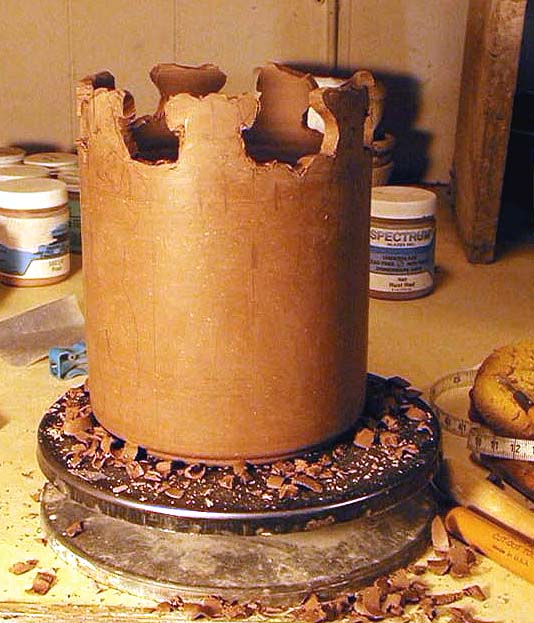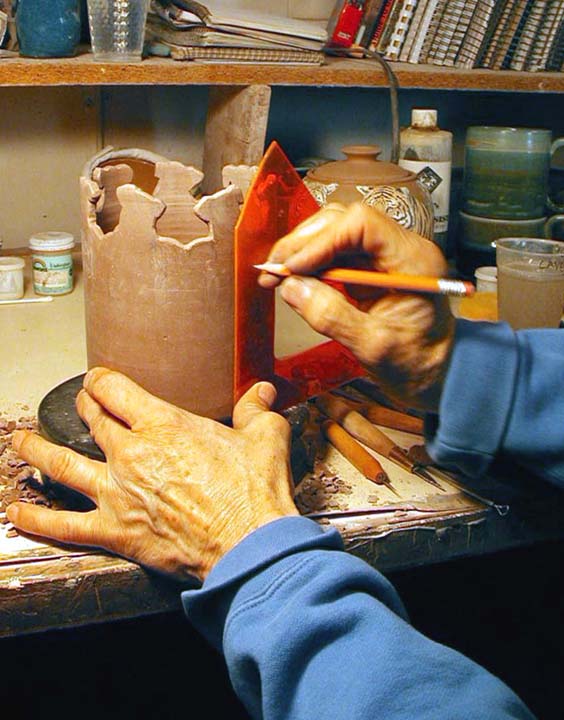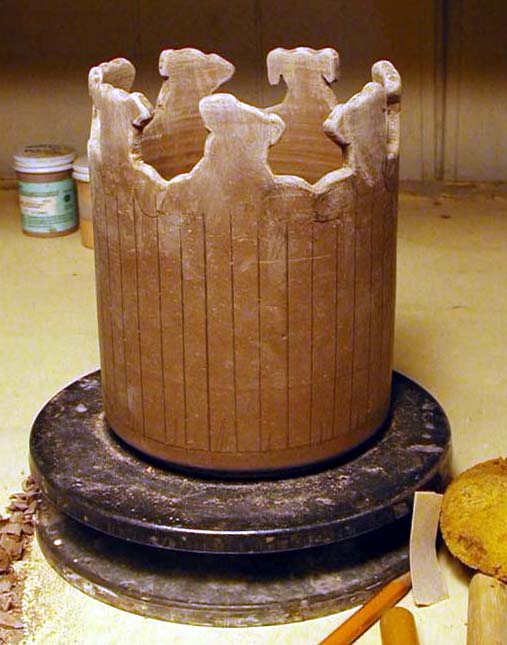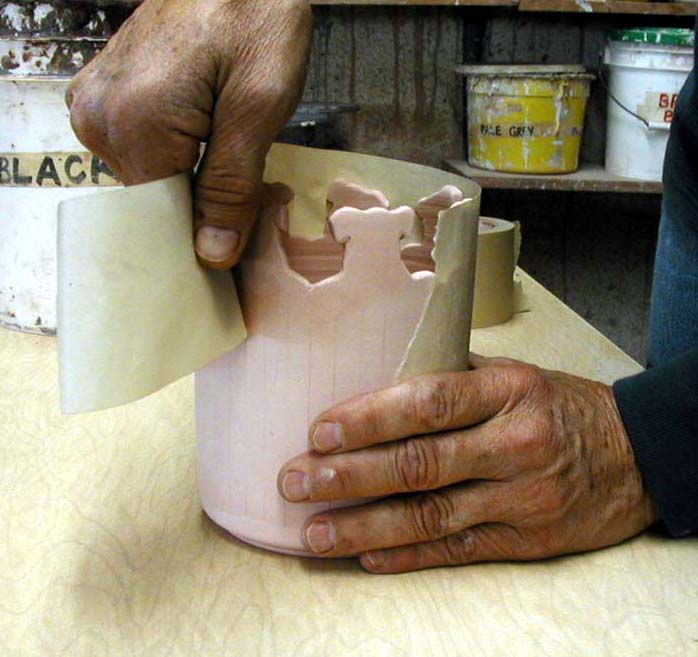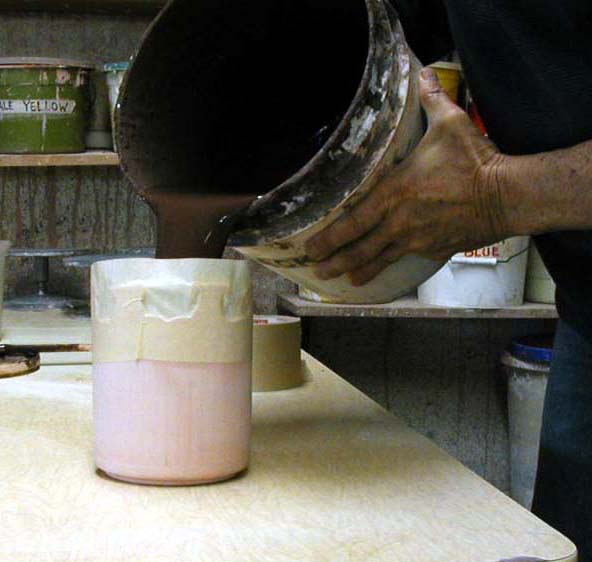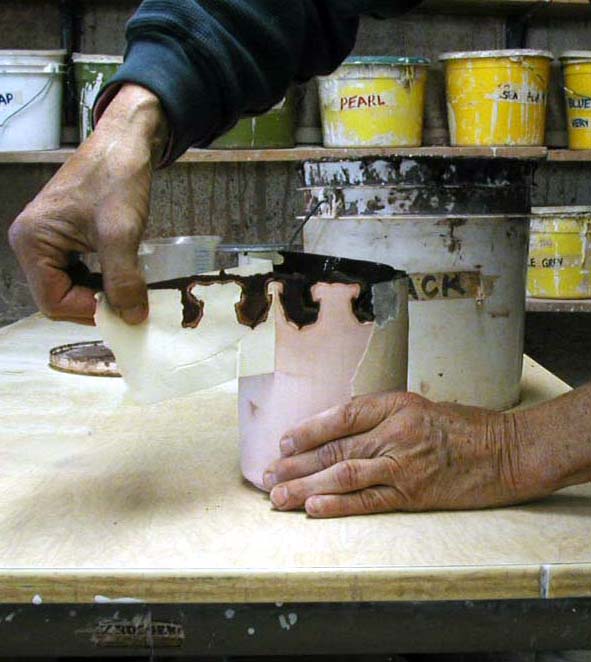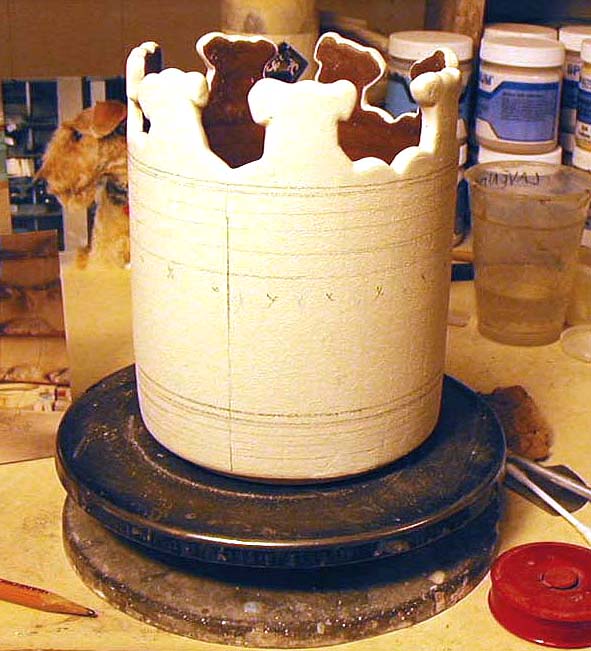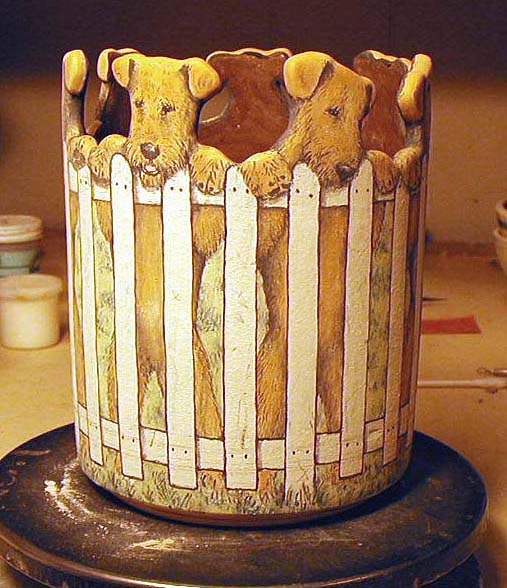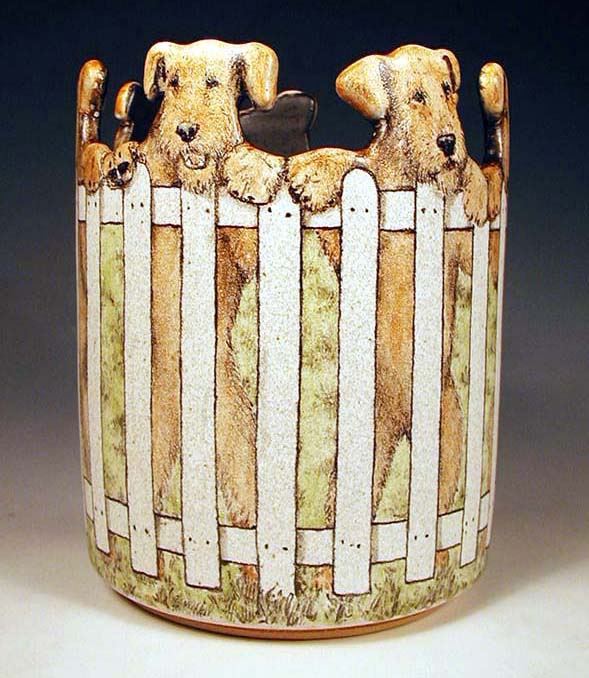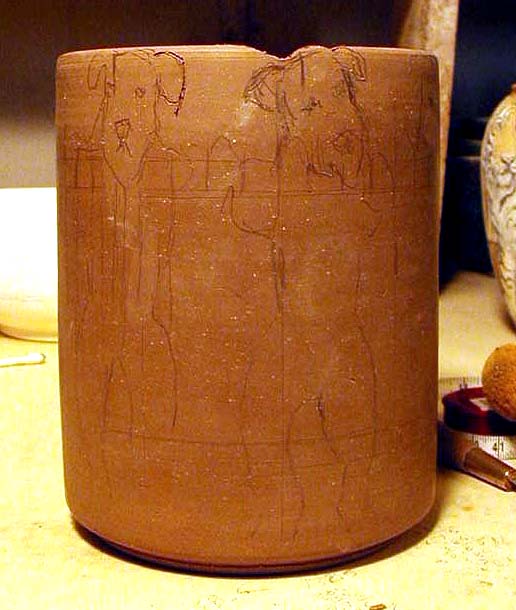
First, I threw straight-sided shape of light brown stoneware on a potter's wheel. The next day when the pot was partially dry, I trimmed the pot to make the foot on the bottom. After trimming, I lightly drew a standing Airedale on pot with a pencil to get a sense of spacing and how many Airedales would fit comfortably around the pot. I decided on seven, lightly marked seven segments on the pot, then drew in the Airedales. |
